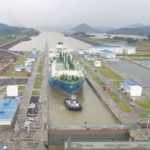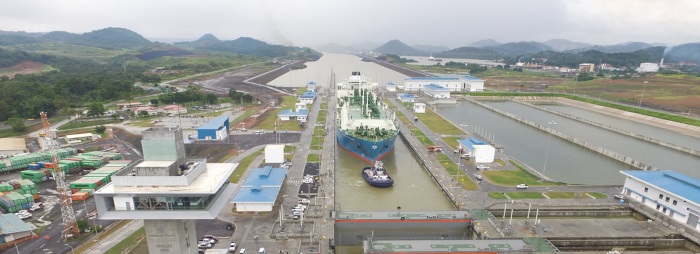A Supply Chain Issue: Panama Canal and Its Fight Against Climate Change

The Panama Canal’s fight against climate change is well underway, in what appears to be an ongoing issue. In its latest weekly report, shipbroker Intermodal said that “as of the latest update, the Panama Canal continues to grapple with the effects of a historic drought, impacting shipping markets in the region. The drought has compelled the Panama Canal Authority to implement measures to conserve water, including reducing maximum ship weights and daily ship crossings. This situation has significant implications for the global shipping industry, as the Panama Canal is a vital maritime shortcut that connects the Pacific and Atlantic oceans, facilitating the movement of goods and commodities”.

Source: Intermodal
According to Intermodal’s Research Analyst, Ms. Chara Georgousi, “within the last week, the drought-related disruptions at the Panama Canal have led to increased shipping costs and delays, particularly for vessels using this crucial waterway. The reduced weight limits and fewer daily crossings have resulted in queues of ships waiting to pass through, leading to congestion and longer wait times. This congestion has caused shipping prices to surge, affecting trade routes that rely heavily on the Panama Canal”.

Ms. Georgousi added that “restrictions at the canal started earlier this year, affecting about 170 countries and virtually every type of good. In particular, bulk carriers that transport commodities from corn to iron ore, as well as tankers that move oil, fuel, gas and chemicals have been affected. Ship owners and operators are faced with difficult decisions as they navigate the challenges posed by the drought. They may opt to carry less cargo, explore alternative routes that add significant tonne miles to voyages, or simply endure the delays and increased costs associated with the bottleneck at the Panama Canal. Meanwhile, energy companies have been occasionally forced to reroute vessels laden with coal and LNG to the Suez Canal”.

Source: Intermodal
“More than 14,000 ships crossed the canal in 2022. Container ships are the most common users of the Panama Canal and transport more than 40% of consumer goods traded between NE Asia and the U.S. East Coast. The situation has also brought attention to the broader issue of climate change and its impact on global trade. The disruptions caused by the drought highlight the vulnerability of major trade routes to extreme weather events, emphasizing the need for increased resilience and adaptability within the shipping industry. In summary, the ongoing drought at the Panama Canal continues to affect shipping markets by causing congestion, delays, and increased shipping costs. The situation underscores the broader challenges posed by climate-related disruptions and their potential to reshape the dynamics of the global shipping industry”, Intermodal’s analyst concluded.
Nikos Roussanoglou, Hellenic Shipping News Worldwide
Source link
